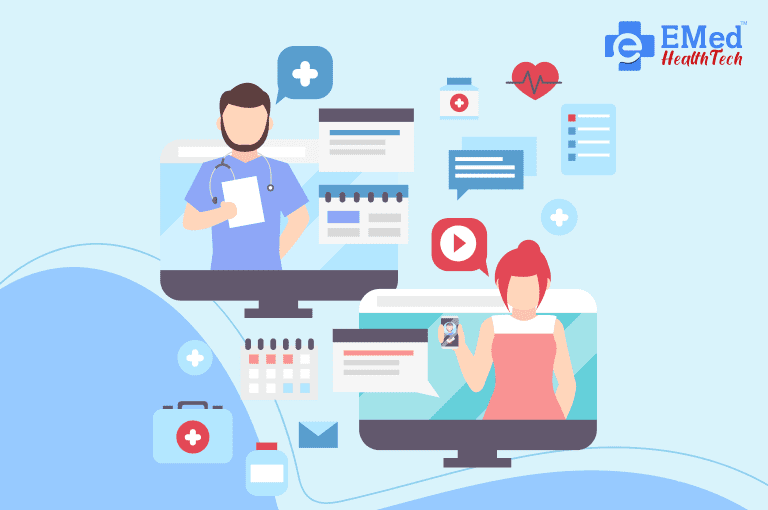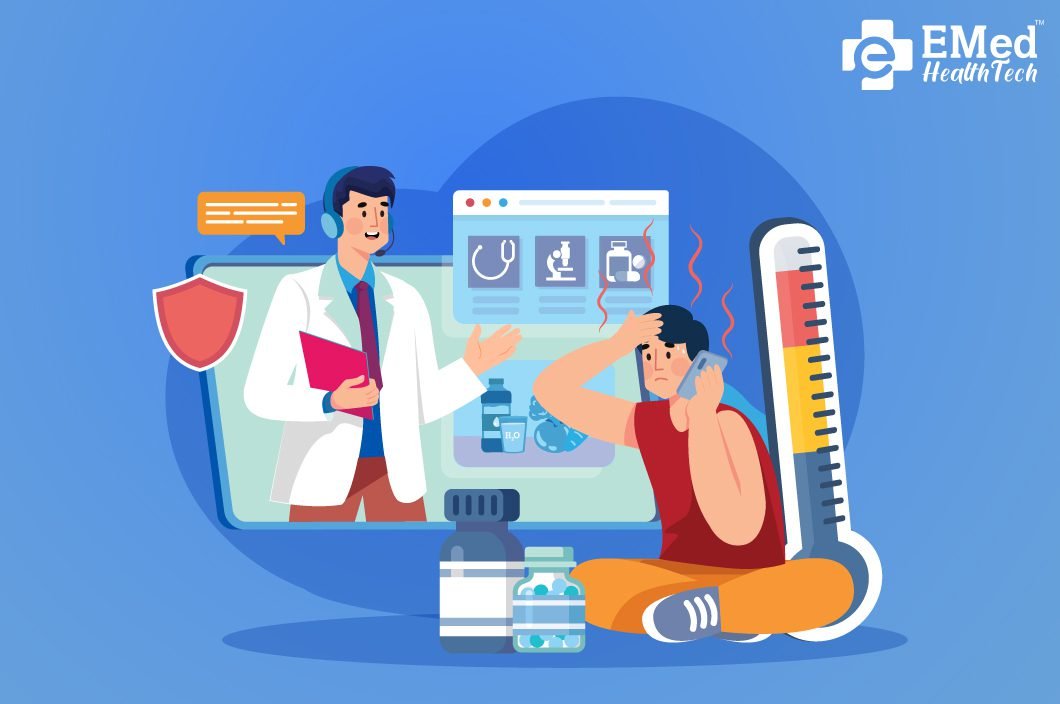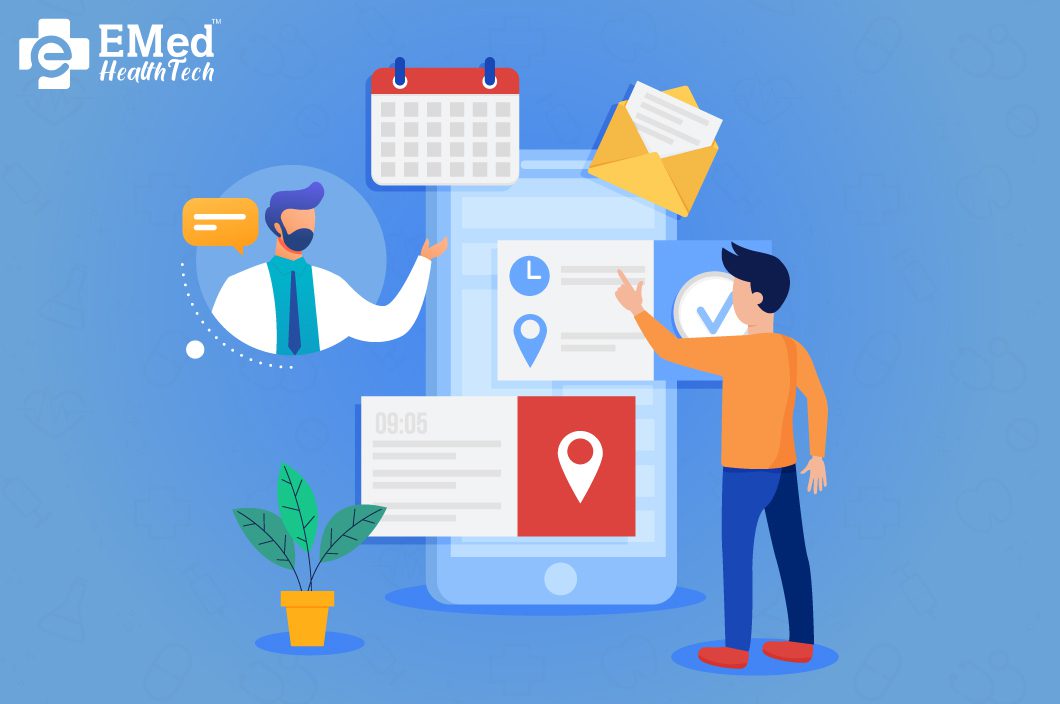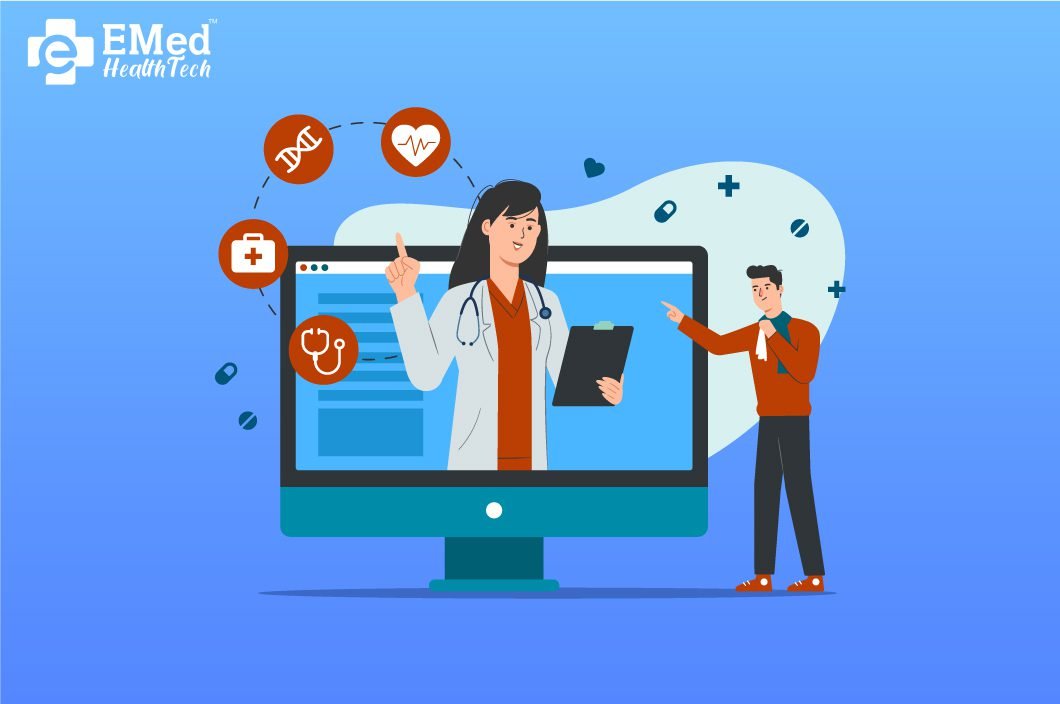As we move into 2025, telemedicine is emerging as a key player in healthcare innovation. The rapid evolution of telemedicine app development redefines patient care and makes healthcare more accessible, flexible, and efficient. Telemedicine apps are transforming how people interact with healthcare providers, offering solutions for online doctor consultations, remote patient monitoring, and digital health management.
From AI-powered virtual assistants to advanced telehealth platforms, these trends in telemedicine software development are enhancing the user experience and setting new standards for digital health solutions. Let’s take a closer look at the telemedicine app development trends that are expected to drive the industry forward in 2025.
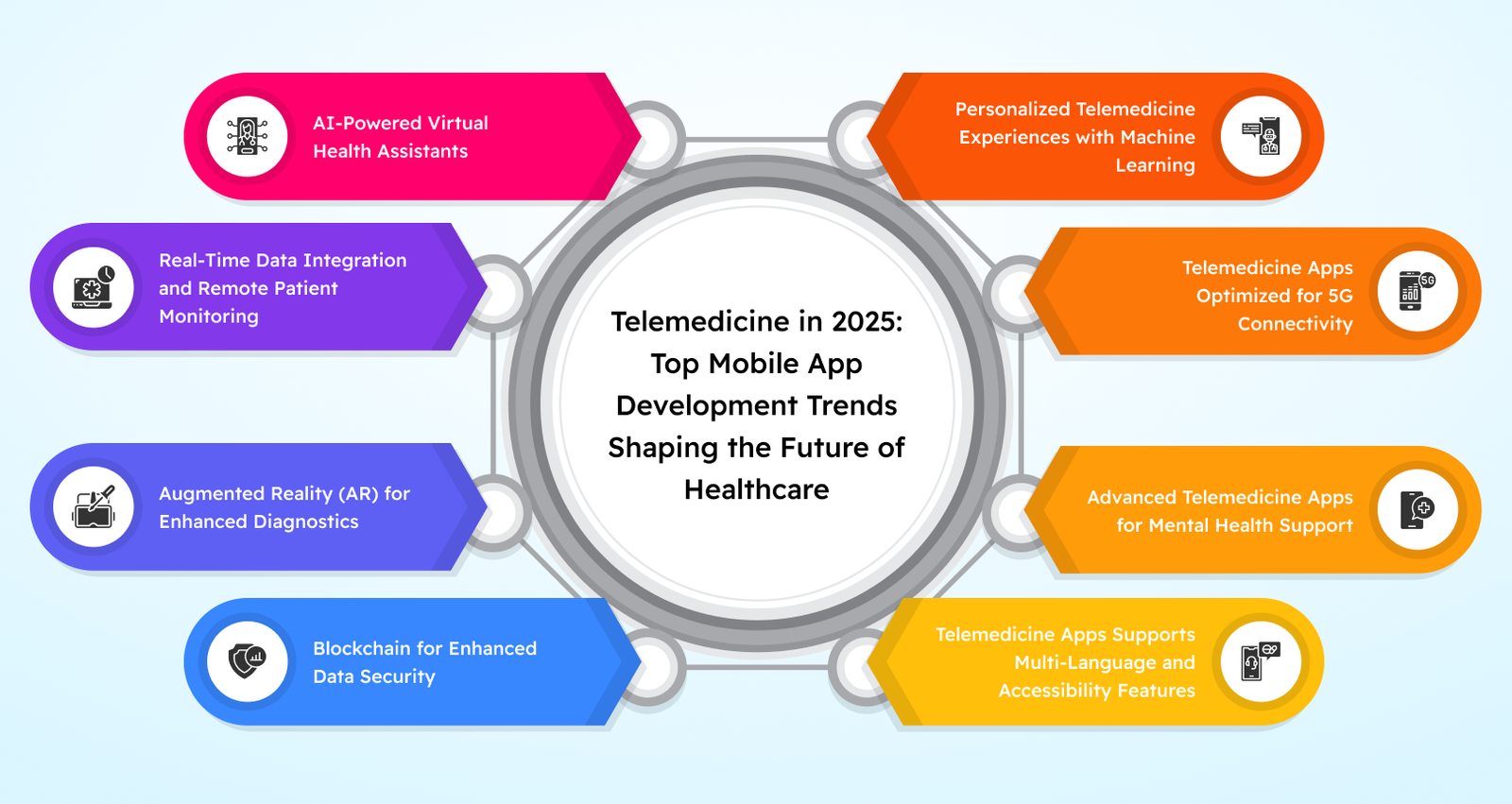
-
AI-Powered Virtual Health Assistants
AI-powered virtual health assistants are set to play a major role in telemedicine apps by 2025, allowing for more personalised and efficient patient interactions. These digital assistants can handle tasks such as answering common questions, assisting with scheduling, and providing initial diagnoses based on patient symptoms. Incorporating AI can improve patient experience and reduce wait times for online doctor consultation apps in telemedicine app development.
Beyond basic tasks, AI virtual assistants also provide benefits like patient follow-up and medication reminders, which can help improve adherence to treatment plans. Additionally, with AI advancements, these assistants are getting better at understanding patient needs, improving patient engagement, and ultimately enhancing healthcare outcomes.
-
Real-Time Data Integration and Remote Patient Monitoring
Remote patient monitoring has gained traction over the years, and in 2025, real-time data integration will become even more sophisticated. Telemedicine app development now includes features that allow for continuous patient monitoring and data sharing with healthcare providers. This includes wearable devices that monitor vital signs like heart rate, blood pressure, glucose levels, and more.
Integrating this data into telemedicine apps enables real-time updates, which allows doctors to make faster, more informed decisions. These insights also give healthcare professionals a clearer picture of their patient’s health trends, leading to better preventive care. With the demand for accessible healthcare rising, telemedicine software development incorporates more seamless and secure data sharing, giving patients and providers peace of mind.
-
Augmented Reality (AR) for Enhanced Diagnostics
Augmented Reality (AR) is becoming increasingly popular in telemedicine app development, particularly for improving diagnostic capabilities. AR offers healthcare providers a more immersive experience, allowing them to virtually examine patients’ symptoms and even guide them through self-assessments. This technology can be particularly beneficial for online doctor consultation apps, where accurate visual assessment is critical.
In 2025, we expect to see AR further integrated into telemedicine apps to improve diagnostics, especially for dermatology, ophthalmology, and physical therapy. Through AR, healthcare providers can perform remote evaluations, offering patients a more interactive and effective telemedicine experience.
-
Blockchain for Enhanced Data Security
Data security is a critical concern for telemedicine, given the sensitivity of patient information. Blockchain technology is gaining popularity in telemedicine app development because of its ability to secure data in a decentralised, immutable format. Blockchain helps prevent unauthorised data access by creating transparent and secure records of each transaction or access point, which can be vital for patients and healthcare providers.
For telehealth platforms, blockchain ensures that each patient’s data remains confidential, fostering trust in digital health solutions. By 2025, blockchain technology will be more widely used in telemedicine apps, especially as regulatory frameworks evolve to prioritise patient privacy. This will also aid healthcare providers in meeting data compliance standards, helping them operate more securely and efficiently.
-
Personalised Telemedicine Experiences with Machine Learning
Machine learning (ML) is transforming healthcare delivery by providing tailored recommendations and insights based on user data. ML algorithms can analyse a user’s health history, preferences, and habits in telemedicine app development to offer a more personalised healthcare experience. This includes suggesting preventive measures, recommending lifestyle changes, and customising treatment plans to suit individual needs.
Machine learning enables telehealth platforms to offer highly customised experiences that improve user satisfaction. In 2025, we expect to see more telemedicine apps implementing ML to enhance user interactions and improve health outcomes. With ML’s predictive analytics, telemedicine platforms can proactively identify potential health issues, offering a preventive approach to patient care.
-
Telemedicine Apps Optimized for 5G Connectivity
The advent of 5G technology is transforming telemedicine by providing faster data transfer and higher-quality video calls. With 5G, telemedicine apps can offer smoother and more responsive online doctor consultations, even in rural or remote areas where traditional internet connectivity might be limited. This enables healthcare providers to conduct high-definition consultations and even perform detailed visual inspections remotely.
5G enhances telemedicine software development by allowing faster processing of large data sets, such as medical imaging, which can be used for real-time diagnostics and consultations. The high-speed connectivity offered by 5G will make telemedicine apps more effective, accessible, and dependable, expanding healthcare access to those who need it most.
-
Advanced Telemedicine Apps for Mental Health Support
Telemedicine app development is increasingly focusing on mental health, offering apps specifically designed to provide therapy, counselling, and self-care resources. Telehealth apps in 2025 will include more comprehensive support systems for mental health, offering services such as virtual therapy, mood tracking, and self-care tools.
These platforms enable individuals to access mental health services from the comfort of their homes, breaking down barriers to care. As mental health awareness continues to grow, telemedicine solutions will provide a much-needed resource for those seeking support, further solidifying the role of telemedicine in comprehensive healthcare.
-
Telemedicine Apps Supports Multi-Language and Accessibility Features
With the growing adoption of telemedicine across diverse populations, providing multi-language support and accessibility options is a priority. By 2025, telemedicine app development will increasingly incorporate language translation tools, voice recognition, and text-to-speech functionalities. This will allow telehealth platforms to serve a global audience, improving access for non-native speakers and individuals with disabilities.
Telemedicine software development with a focus on inclusivity ensures that healthcare services are accessible to all, regardless of language or physical limitations. Enhancing accessibility in telehealth apps is not only good practice but also expands market reach for telemedicine platforms, creating a win-win scenario for users and providers.
Conclusion
Telemedicine in 2025 is set to be more advanced, secure, and accessible than ever before, thanks to ongoing innovations in app development. From AI-driven assistants and real-time data integration to AR-enhanced diagnostics and blockchain security, these advancements are shaping the future of digital healthcare. As telemedicine becomes a vital part of healthcare, telemedicine app development continues to prioritize patient-centric features, data security, and user experience. By adopting these trends, healthcare providers can offer more reliable, efficient, and comprehensive care for a broad spectrum of patients.
Are you ready to elevate your telemedicine solutions? Connect with EMed HealthTech for state-of-the-art telemedicine app development services that combine innovation, security, and patient satisfaction for a thriving digital health future.

